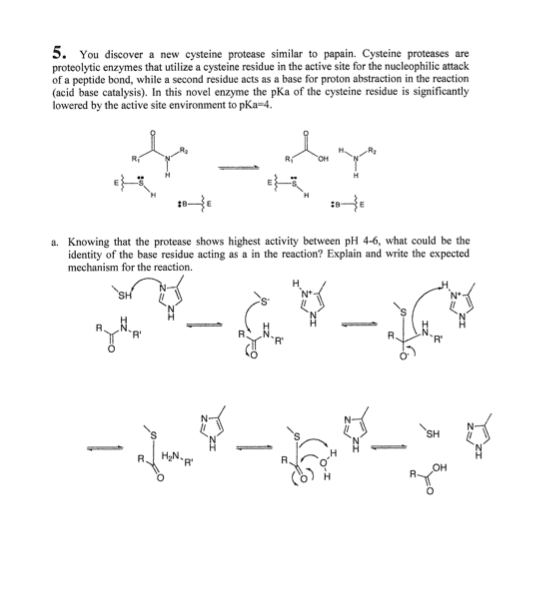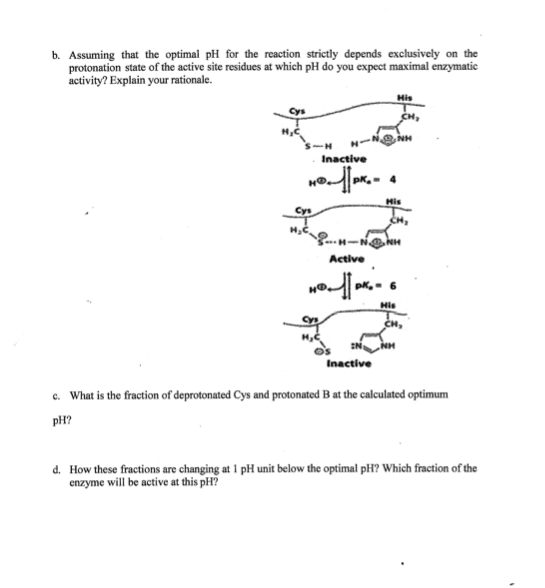5. You discover a new cysteine protease similar to papain. Cysteine proteases are proteolytic enzymes that utilize a cysteine residue in the active site for the nucleophilic attack of a peptide bond, while a second residue acts as a base for proton abstraction in the reaction (acid base catalysis). In this novel enzyme the pKa of the cysteine residue is significantly lowered by the active site environment to pKa-4. a. Knowing that the protease shows highest activity between pH 4-6, what could be the identity of the base residue acting as a in the reaction? Explain and write the expected mechanism for the reaction. S.
Enzyme kinetics
In biochemistry, enzymes are proteins that act as biological catalysts. Catalysis is the addition of a catalyst to a chemical reaction to speed up the pace of the reaction. Catalysis can be categorized as either homogeneous or heterogeneous, depending on whether the catalysts are distributed in the same phase as that of the reactants. Enzymes are an essential part of the cell because, without them, many organic processes would slow down and thus will affect the processes that are important for cell survival and sustenance.
Regulation of Enzymes
A substance that acts as a catalyst to regulate the reaction rate in the living organism's metabolic pathways without itself getting altered is an enzyme. Most of the biological reactions and metabolic pathways in the living systems are carried out by enzymes. They are specific for their works and work in particular conditions. It maintains the best possible rate of reaction in the most stable state. The enzymes have distinct properties as they can proceed with the reaction in any direction, their particular binding sites, pH specificity, temperature specificity required in very few amounts.


Trending now
This is a popular solution!
Step by step
Solved in 2 steps






